How To Play A Mesmerizing Jazz Piano Solo
 Would you like to learn how to play a mesmerizing jazz piano solo? You’re in the right place.
Would you like to learn how to play a mesmerizing jazz piano solo? You’re in the right place.
In today’s lesson, I’ll teach you how to improvise a jazz piano solo in a fun and captivating way.
This lesson will help you learn how to improvise like the masters. You’ll also learn how to capture your listeners’ attention.
Before we begin, take 5 minutes to listen to a mesmerizing jazz piano solo: Red Garland’s take on “What Is This Thing Called Love?“:
Jazz Piano Solo Video: “What Is This Thing Called Love?”
8 Steps To Learn How To Play A Mesmerizing Jazz Piano Solo
Now that you’ve taken a few minutes to listen to the tune, let’s get further into how to play a mesmerizing jazz piano solo.
1. How To Get Great Swing Feel Fast
 One memorable Duke Ellington motto is “It don’t mean a thing if it ain’t got no swing.”
One memorable Duke Ellington motto is “It don’t mean a thing if it ain’t got no swing.”
He took that statement seriously that it became the title of one of his compositions.
Now, what does that exactly mean for you? If you want to be able to play a solo, you have to learn jazz piano rhythm.
The first step to learn how to do that is by listening and singing along to great jazz records.
Check out this performance of “Confirmation” by Charlie Parker:
Next are some steps that I guarantee will give you great swing feel::
- Simply listen to “Confirmation” and tap your foot to the beat. Focus on the melody and solos.
- Listen at least 7 times. The more you repeat listening, the better.
- Sing the melodies along the recording one phrase at a time. Keep tapping your foot while doing this.
- Make sure that you are able to sing the rhythms correctly along the recording.
- If you make a mistake, go back to the phrase and try again.
- If you’re still making a mistake, slow down the playback speed. Try slowing it down to 50% for starters.
- Once playback has been slowed down, try singing the phrase along the recording.
- Once you can sing the phrase with perfect rhythm, repeat singing.
- When you can sing the phrase perfectly at a slow speed, sing along at normal tempo.
- Keep repeating all of these steps until you can sing along “Confirmation” perfectly.
The point of this first step is not to copy the exact lines (this will be for a later time). The purpose is to precisely capture the rhythm and the phrasing of the solo.
However, this is only the beginning of playing amazing jazz piano solos so read on.
2. Why Learning Harmony Will Make Your Jazz Piano Solos Sweet
 Most people who start soloing start out with learning scales.
Most people who start soloing start out with learning scales.
However, it’s best to understand some jazz harmony first.
Some reasons why you should learn jazz harmony are:
- Almost every great piano solo in jazz targets chord tones, especially in the strong beats.
- Such solos outline the harmony of the chord but in a melodic way.
Since we have been using “Confirmation” as a model, learn its chord progression.
To make things easy, download a transcription of Bird’s own solo in “Confirmation” as featured in the YouTube video right here: Charlie Parker’s Confirmation Solo – Transcription by Corey Kendrick
Once you have downloaded the sheet music, learn how to play the jazz chords of the tune.
After that, try playing one of two bars of the solo over one of the chords. Listen to how the solo lines go nicely.
Now, let’s go a step further into making it smoother sounding.
3. How Voice Leading Makes Your Jazz Piano Solo Rich And Buttery
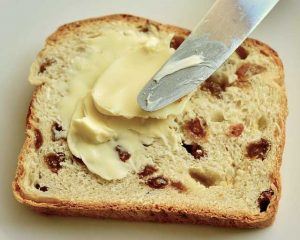 Now is the time to learn how to play those chords as smooth and connected as possible.
Now is the time to learn how to play those chords as smooth and connected as possible.
Your jazz piano solo should have that nice smooth sound, like spreading butter on warm toast.
Why would that be important in coming up with a mesmerizing piano solo? Good question.
Here are two good reasons:
- Smooth voice leading makes your solos more melodic and musical.
- It also makes your lines easier to play.
So, how does smooth voice leading work? To help you understand that, let’s look again some chords for “Confirmation”:

Take note of how I voiced the chords. Notice that I used a couple of rootless and fifth-less chord voicings in various inversions.
I chose chord inversions that are connected together via common and passing tones.
This is the technique we call smooth voice leading. It has the effect of making everything sound connected and cohesive.
Now that you’ve learned the smooth voice leading technique, let’s talk about more ways to string soloing ideas together.
4. I Analyzed Charlie Parker’s Solo In An Hour. Here’s What Happened
 Guess what I found out:
Guess what I found out:
Charlie Parker’s solo on “Confirmation” is a really great example of an amazing solo.
This is because he used melodic and phrasing techniques in jazz piano improvisation.
These techniques work for all instruments, including piano.
In the excerpt below, you can see how these melodic and phrasing techniques connect one idea to another:
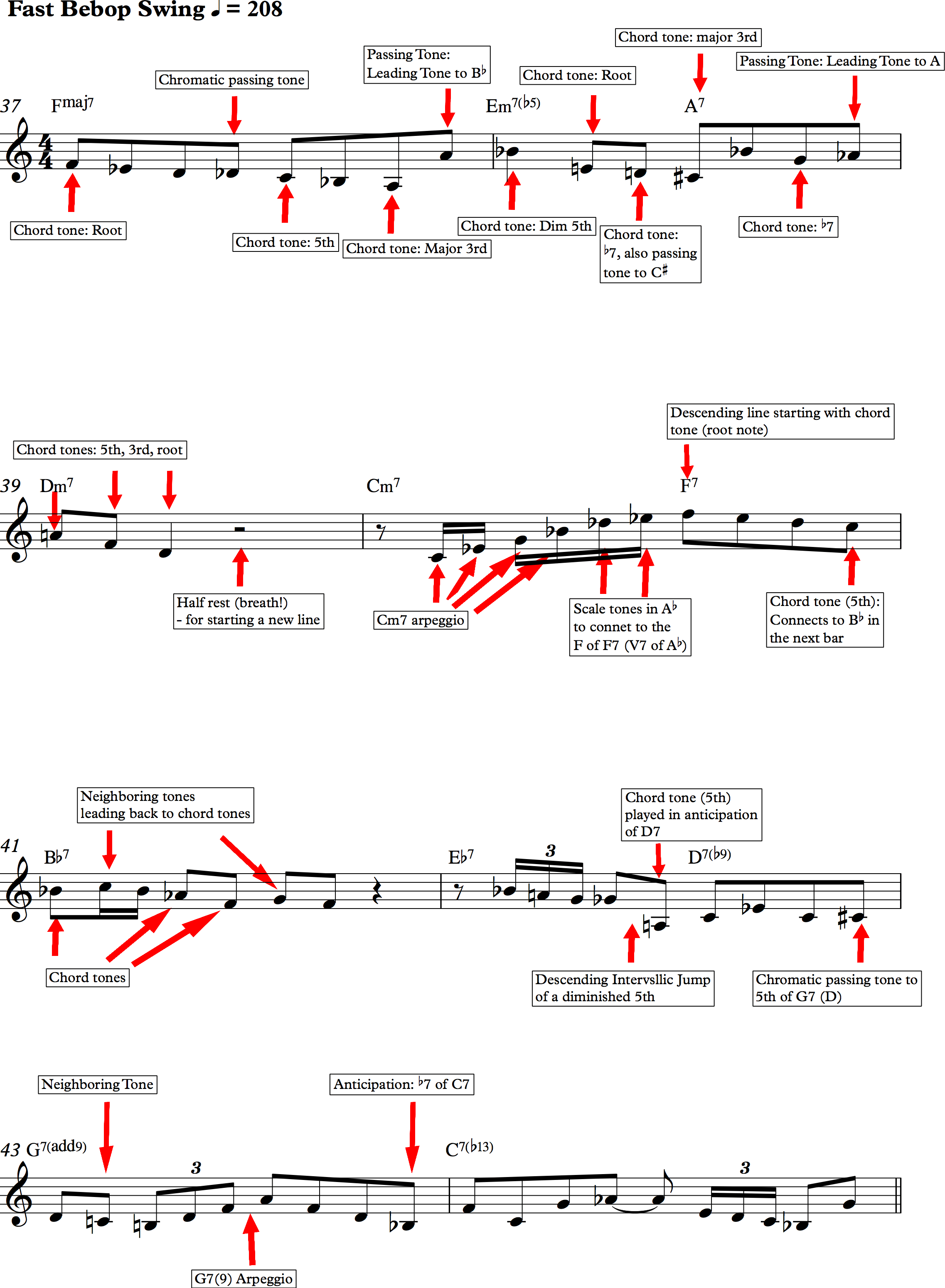
In his solo, Charlie Parker plays chord tones in a number of ways:
- On the strong beats.
- Exactly on beats.
- If played off the beat, it is held long enough to land on a beat (look at the b13 in measure 44).
Added Tricks That Make Your Jazz Piano Solo More Melodic
 In a jazz piano solo, a chord tone works like an anchor or a landmark of a line or musical idea.
In a jazz piano solo, a chord tone works like an anchor or a landmark of a line or musical idea.
These chord tones outline the harmonies that run through the tune.
Hearing chord tones all the time doesn’t sound very melodic though.
To make things more melodic and smooth, you can use a number of techniques such as:
- Passing tones – These are notes that connect a chord tone from one chord to the chord tone of the next chord.
- Neighboring tones – Notes that connect two chord tones of the same chord.
- Anticipations – A chord tone played just right before a chord in a measure arrives.
- Intervallic motion – Melodic movement bigger than a whole step. These larger intervals tend to sound exciting.
- Rests – Pauses/silent portions give the music some space to breathe and reset a listener’s attention.
As you see in Charlie Parker’s solo, most of these devices are played either on weak beats or off the beats.
Now is the time for you to discover how to make your solo more memorable.
5. How To Improvise Motifs For Your Jazz Piano Solo
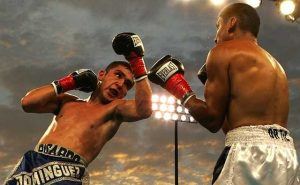 When you’re improvising a jazz piano solo, it’s always a great idea to come up with short but interesting melodic ideas.
When you’re improvising a jazz piano solo, it’s always a great idea to come up with short but interesting melodic ideas.
Melodic ideas are synonymous with the term “motif”.
Some of these motifs are so memorable that they are called “hooks”.
In fact, greatest melodic ideas even become part of jazz vocabulary as licks we use for any jazz piano 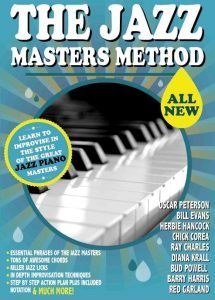 solo.
solo.
A great place to learn melodic ideas that will excite your audience is the Jazz Masters Method.
Even if you don’t know where to start listening or have a hard time reading notation, the Jazz Masters Method provides a step-by-step way to break down the licks of the masters, make them your own, and wow your audience with some amazing improv.
Now how do you take care of the problem of being too derivative? You’ll find the answer below:
6. Add Excitement And Personality To Your Solo
 To make your jazz piano solo a lot more exciting and original, use some of the hacks below.
To make your jazz piano solo a lot more exciting and original, use some of the hacks below.
Let’s start with how to deal with scales.
The use of scales over matching chords is one approach that some jazz pianists use to develop their own piano solos.
When used properly, scales can add color to your solos as arm you with material to string your chord tones in a sensible fashion.
WARNING: Although certain scales will sound correct over particular chords, merely running across with them can become boring real fast.
So how do you avoid this problem?
One of the hacks you can use is your own scale patterns.
How To Make Your Own Scale Patterns
To come up with your own scale pattern, here are the steps:
- Randomly play a short series of notes within a particular scale that fits one to two beats.
- Memorize the pattern you just came up with.
- Play your new pattern across the length of the scale.
- Try out your new pattern on different scales.
- Use pattern over different chords and chord progressions.
By doing this, you’ve gone a step further adding excitement as well as bringing in your personality with your jazz piano solo.
How To Move Beyond Scale Patterns
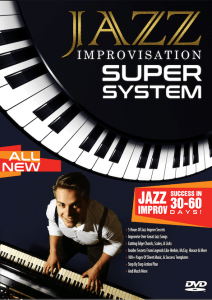 Relying simply on scale patterns to make your jazz piano solos exciting is not enough to make great music, and that’s the truth.
Relying simply on scale patterns to make your jazz piano solos exciting is not enough to make great music, and that’s the truth.
You have to go beyond that if you want to mesmerize your audience.
Now you can level up your improvisation skills with the Jazz Improvisation Super System.
Inside the Jazz Improvisation Super System, you will learn performance-level hacks in various styles that will skyrocket your jazz training.
Even if you can’t find a teacher or can’t read music, you’ll find the fastest method of playing mind-boggling jazz piano solos with this course.
Now it’s time to learn about how using intervals can add greatness to a piano solo.
What You Should Know About Intervallic Motion
 If you want to make your solos more exciting, use intervals other than whole steps and half steps.
If you want to make your solos more exciting, use intervals other than whole steps and half steps.
Aim for larger distances like thirds, fourths, fifths, and others in your jazz piano solo!
Put together big and small intervals in a musical sentence to make a really great impression.
Check out this example from Steve’s jazz piano riffs lesson. See how the combination of fourths, thirds, whole steps, and half steps can create a really interesting lick:
How To Spice Up Your Improv Like Herbie, Otis, & Chick
 If you want to add more rhythmic and percussive interest to your playing, you can spice up your solos with trills and tremolos. These techniques usually give emphasis to certain notes in a solo.
If you want to add more rhythmic and percussive interest to your playing, you can spice up your solos with trills and tremolos. These techniques usually give emphasis to certain notes in a solo.
A trill is a rapid, back-and-forth repetition of two notes, usually a half or a whole step away.
For an example of effective use of trills and other ornaments, check out this Art Tatum performance of “Yesterdays”:
One kind of tremolo is that of a single, repeated note that will allow you to emulate something like a mandolin or a steel drum for your piano solo.
Check out this example by Chick Corea on this live performance of “The Romantic Warrior” by Return to Forever:
Another popular kind of tremolo is that of between at least two notes. We usually hear this kind of tremolo at the end of a lick.
Piano greats like Herbie Hancock and Otis Spann use the tremolo to great effect to highlight certain melody notes or chord tones.
Check out this example here of the effective use of this kind of tremolo by Otis Spann. You can hear it at around 1:33 of the video:
Want to sound bigger? Learn how to add more meat to your solo below.
How To Beef Up Your Jazz Piano Solo
 If you want your jazz piano solo to sound more beefy or powerful, play some octaves in it.
If you want your jazz piano solo to sound more beefy or powerful, play some octaves in it.
You can also use octaves to either give emphasis to particular chord tones and melodic lines.
In this example, check out how Errol Garner does that to his own composition “Misty”:
Do You Sound Worse Than A Typewriter?
 When you’re playing a solo, it can’t be all about 16th note triplet runs all the time. You’ll sound worse than a typewriter that way.
When you’re playing a solo, it can’t be all about 16th note triplet runs all the time. You’ll sound worse than a typewriter that way.
Keep in mind that all great solos have great rhythmic variety.
As a general guideline, mix in long rhythms with short ones.
You would usually play longer notes for chord tones to give them emphasis.
One hallmark feature of jazz is syncopation, and you need to incorporate that as well.
Here’s a great tutorial by Steve featuring a sample from our special beginner jazz piano course called The Zero To Jazz Piano Hero Program.
It’s also easy to get lost in a flurry of notes without pausing in between. It sounds unnatural.
To make your jazz piano solo sound more natural, learn a great phrasing method with the next tip.
7. How To Play What You Hear In Your Head
 One of the most important things any musician needs to develop is a skill called audiation.
One of the most important things any musician needs to develop is a skill called audiation.
Sounds very nerdy, right? What audiation means is being able to imagine music inside your mind.
Audiation is simply being able to hear music in your head and play it accurately.
I’ll give you one really simple audiation exercise here.
Audiation Exercise
Now, this might seem very simple but it has a lot of benefits. Here are the steps:
- Sing/play the first two bars of “Twinkle, Twinkle, Little Star” or the Alphabet Song.
- “Sing” or “play” the next two bars in your mind.
- Sing/play the next two bars audibly.
- “Sing” or “play” the next two bars in your mind.
- Repeat the process.
If you’ve completed the exercise above, congratulations! You have successfully performed audiation.
Audiation goes a long way into helping you be the musician of your dreams.
It will help you in every aspect of music from reading notation to improvising your jazz piano solo.
What else can you do to maximize audiation? Find out below.
How To Go Further With Audiation
 There are great benefits to singing in unison with what you’re playing.
There are great benefits to singing in unison with what you’re playing.
The greatest improvisers do it, and so should you.
Here are two of the greatest benefits:
- Singing the notes of your solo is great ear training. Your mind becomes more connected to the notes that you are playing.
- Singing while you play forces you to phrase correctly, making your solos sound more natural. You need to pattern your solo after what you’re singing.
Just like talking, you can’t really utter words in a continuous stream. Nobody will understand you if you do that.
When you sing what you play, you will be able to put in rests in your jazz piano solo whenever you take a breath.
8. How To Develop Your Technique And Vocabulary
 Let’s face it: playing piano can be physically demanding.
Let’s face it: playing piano can be physically demanding.
If you want be a virtuoso like Art Tatum or Herbie Hancock, you need to build technique and vocabulary.
Technique refers to the physical ability to express musical vocabulary. Musical vocabulary consists of musical phrases commonly associated with a particular style of music.
There are a lot of approaches to developing piano technique. Let’s look at two approaches below.
The Russian Classical Piano Approach
The Russian School of piano playing in a nutshell involves these aspects:
- Singing for development of audiation and ear training.
- Technical exercises (Hanon, Czerny, Liszt, etc.)
- Sight reading.
- Mastery of pieces.
 The Russian school of piano playing is so designed that a serious student will gain complete technical mastery of the piano.
The Russian school of piano playing is so designed that a serious student will gain complete technical mastery of the piano.
The downside, however, is the time it takes. In this method, training should start at the age of 6 or 7.
In this classical method, development of vocabulary from improvisation is not emphasized.
Technical exercises are only in aid of faster learning and accurate performance of the written score.
Another thing is that while this method will help develop technique, it does not consider the unique language of jazz.
If you were classically trained, fret not as many classical pianists can transition to jazz.
Matter of fact is that solid technical training in classical music is helpful for developing a mesmerizing jazz piano solo.
How would you go about that? Check out this cool lesson by Steve regarding transitioning from classical to jazz piano.
Now let’s look at a more jazz-oriented way of developing technique and vocabulary.
The Jazz Piano Approach
You can describe the jazz piano approach to develop technique and vocabulary with the following:
- Listening to performances and recordings.
- Learning tunes by ear (transcription, singing melodies).
- Technical exercises by way of jazz harmony, licks, transcriptions, etc. Song materials themselves become technical exercises.
- Improvisation.
 The jazz piano approach does have some things that are similar to the Russian Piano School. The vocabulary is very different though.
The jazz piano approach does have some things that are similar to the Russian Piano School. The vocabulary is very different though.
Jazz piano has a heavier emphasis on the oral and aural tradition of learning in contrast to classical.
I’ll let you in on a secret: If you have read this far, you’ll realize that tips 1 through 7 follow the jazz piano approach.
No, You Don’t Have To Do Trial-And-Error To Play A Jazz Piano Solo
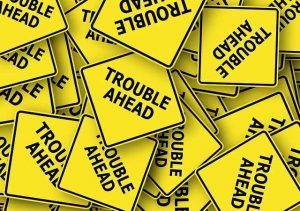 Do you find yourself playing lackluster jazz piano every time?
Do you find yourself playing lackluster jazz piano every time?
You might try a trial-and-error approach to correct that like what I did years ago.
You might manage to play something cool every now and then.
However, you will fail big time if you keep that up.
Guess what? It doesn’t have to take that long for you to develop a really good jazz piano solo.
Premium Jazz Lessons Membership provides a tried-and-tested step-by-step method that takes the confusion out of mastering jazz piano.
The lessons include some of the hippest chord voicings, licks, and improvisation drills that will take your mastery of jazz to a whole other level.

Inside Premium Membership, you will have:
- Instant Access To Over 22 hours of HD quality streaming videos. Play great songs fast!
- Access to learn the best jazz standards. Hours of killer jazz tunes to explore.
- 3 full arrangements of every song (beginner, intermediate, advanced). Perfect for players of all levels to build impressive skills.
- Downloadable notation, MIDI files & chord charts for every song that you can use to shortcut your learning.
Every lesson inside Premium Membership puts you through the paces of all our 8 tips described above to develop that amazing jazz piano solo and so much more.
There you have it! Follow and practice the tips here, and you’ll be on your way towards playing mesmerizing piano solos.
Once you’ve mastered these concepts, you’ll be able to dazzle your audience, be able to freely express what’s in your musical mind, and have lots of fun making music.
Did you find the tips helpful? Do you have any other suggestions to add? Feel free to leave some of your thoughts in the comments section below. We’d love to hear from you!
Until then, keep practicing and making great music!
